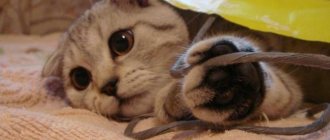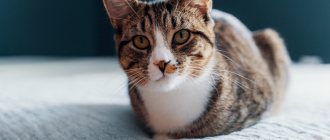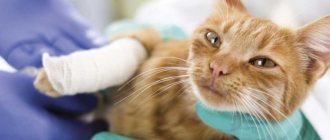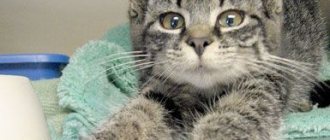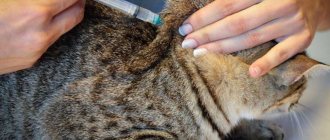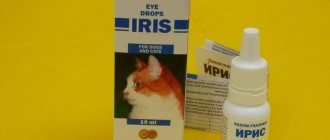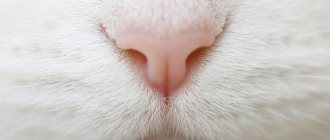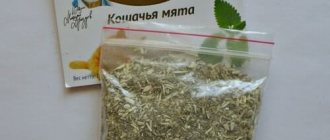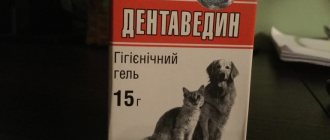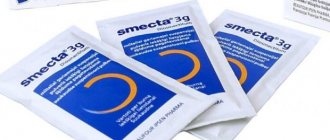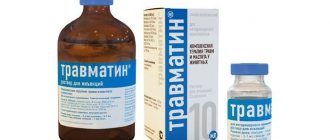7196Pavel
Cats are sociable animals. If a pet is kept only in an apartment and does not go outside, it is maximally protected from dangers - fights with its own kind or a dog, getting injured, contracting infections. But even “greenhouse” conditions do not save you from diseases, wounds and sores that require treatment. Is it possible to smear a cat with brilliant green? This question is often asked, because this product is aggressive and can harm the animal; most breeders are interested in the answer.
general information
The greenery has a very beautiful, sonorous name - brilliant green. Initially, it was used only as an aniline dye, and already in the process of coloring preparations, its antimicrobial properties were revealed. Today it is a common disinfectant and antiseptic obtained synthetically. It has important actions:
- disinfects and sterilizes damaged areas;
- dries wet wounds.
The drug is available in various forms: as an alcohol liquid, powder, pencil and even an aerosol, which is simple and easy to use.
How to treat if the wound does not heal on the paw
It happens that a cat has injured its paw and quite some time has passed, but the wound still does not heal. In this case, it is imperative to treat it with medications so as not to lead to severe infection. Sometimes a similar situation occurs when suppuration begins. Treatment will be required for disinfection three times a day and only then wound healing.
It is very important not to allow the cat to lick the wound, because he may thereby lead himself to repeated suppuration. To do this, cover the wound with a sterile bandage and seal it with a plaster.
And you should definitely take your pet to the vet. In especially severe cases, it is impossible to do without laser irradiation of the wound, injections of antibiotics, special vitamins and food to promote its speedy healing. The main thing is to understand the seriousness of the cat’s injury and treat it responsibly.
https://youtube.com/watch?v=ZnqbzVJc-6w
Positive properties of brilliant green
After many years of regular use of the drug, many of its positive qualities were established. Zelenka:
- Dries wounds without causing harm.
- Not only heals, but also restores the epidermis.
- It has a prolonged effect and lasts for almost a day.
- Effectively fights various fungal pathogens.
- Eliminates the inflammatory process and prevents its development.
- Protects the damaged area from the penetration of lymph and other liquids that provoke suppuration.
- Suitable for disinfecting itchy lesions that your pet constantly scratches.
- Helps identify new lesions. Areas treated with an antiseptic acquire a bright green tint that lasts for a long time. Thanks to such “labeling”, it is possible to control the emergence of new foci of infection.
- Capable of suppressing pathogens that affect the upper layers of the dermis. At the same time, the product does not affect the deeper healthy layers of tissue.
- Fights against numerous pathogenic pathogens (gram-positive bacteria, fungi) and is not absorbed by the body.
Among other things, you can buy brilliant green at any pharmacy, paying only 20-40 rubles for a bottle.
Drugs
Today, in the pharmacy chain you can purchase a large number of medications that disinfect the wound. Accordingly, the choice of medication directly depends on the wound surface, its size, depth and the possibility of further infection. Treatment measures, prevention of secondary infection and eradication of surface healing depend on these factors.
Hydrogen peroxide
Treatment with this drug is possible no later than 2 hours from the moment of injury. Do not pour the bottle directly onto the wound. It is better to moisten the swab with the solution and treat the surface. If possible, apply a sterile dressing. But remember that during treatment you must hold your pet tightly.
Levomekol ointment
Used to accelerate wound healing and to prevent infection. The main active component accelerates metabolic processes in tissues and promotes the removal of purulent contents. To treat and prevent further infection, apply a bandage to the surface of the wound.
Baneocin ointment
It is excellent for treating infected wounds. The drug is not addictive and can be used up to 2-3 times a day. After treatment, it is recommended to cover the wound with a sterile cloth.
Iodine solution
Important ! Do not apply the product directly to the wound surface. Iodine solution can be used to treat the edges of the wound without touching the wound itself
But, if there is a weeping wound, iodine will dry the surface, thereby protecting the animal from further infection.
Brilliant solution
Treating the wound with brilliant green should be done very carefully to avoid burns. It is not recommended to treat a weeping or bleeding wound with brilliant green.
At its core, brilliant green solution is a powerful external antiseptic. Penetrating into the wound surface, it destroys pathogenic microorganisms and prevents the proliferation of bacteria.
Furacilin solution
Furacilin still occupies a leading position for wound treatment. As a rule, to prepare a solution, 20 mg tablets are prescribed, which must be dissolved in 100 ml of water. The prepared solution should be stored in the refrigerator. The wound surface is treated with the product 2-3 times a day.
Disadvantages of antiseptic
Despite the many advantages, brilliant green also has some disadvantages:
- It essentially remains a dye and, when applied to the wound of a resisting animal, can remain on things and the human body.
- The solution contains alcohol, so it causes a burning sensation when used. In addition, there is a risk of burns to damaged tissues.
- Treating a domestic cat's wound with brilliant green is not so easy. Sensing something is wrong, even a small pet can turn into a “fury” and will need an assistant.
- If you pour too much antiseptic on the affected area, the cat can lick it off and get poisoned (read the article on what to do if your cat is poisoned). The same happens when accessing the treated area. This can be avoided by applying a protective bandage or dressing your pet in a special collar.
- Brilliant green dries out the skin, which, on the one hand, is assessed as a positive quality, but on the other hand, it can cause harm by drying out the pet’s skin. Also, due to the resulting crust, tissue healing processes usually slow down.
What to do?
Minor scratches do not require human intervention. Cat saliva contains lysozyme, which prevents the development of opportunistic microbes. If the cat received a minor injury during a fight, it is calmed down, caressed, the hair at the site of the injury is trimmed, and the defect is treated with an antiseptic.
If the paws are injured, apply a bandage to protect against infection, so that it does not put pressure on the sore spot, so that the cat cannot rip it off. Until the wound heals, the animal should not be allowed outside. If the defect is located on the face or ears and the cat scratches it, put on an Elizabethan collar.
The fight against the consequences of lacerations involves preliminary suturing by a qualified veterinarian. Otherwise, healing will take a long time, and an ugly scar will remain at the site of the defect, on which hair will not grow. If the wound has festered, the cat is taken to the clinic, and further treatment is carried out under the supervision of a veterinarian.
https://youtube.com/watch?v=ZnqbzVJc-6w
A recovering pet needs to be provided with adequate nutrition, as well as strengthen the body’s defenses using immunocorrectors - Gamavit, etc.
Zelenka for treating wounds in cats
As a rule, pet owners resort to using such products in emergency cases when it is not possible to seek help from a veterinarian. And almost every first aid kit has everything you need - at least one bottle of the popular antiseptic - iodine or brilliant green, as well as materials for dressing. This is quite enough to treat a wounded pet.
Preparatory and manipulation activities. Preparation for processing and the procedure itself proceed according to a certain algorithm:
- You should not rely only on your own strength, since even the owner is not always able to cope with a frightened cat alone. You should call an assistant.
- It is important to take care of protective equipment: clothing and gloves that will protect the body from bites, scratches and corrosive green spots.
- Before the event, it is advisable to wash your hands with soap and wipe with a disinfectant or alcohol solution.
- The pet should be properly secured, holding it in such a way that it cannot escape.
- The animal should be examined and the condition of the injuries received and their location assessed.
- If necessary, the hair around the damage should be cut off with scissors. Before use, they should also be wiped with vodka, alcohol or another disinfectant.
- Sometimes foreign objects get stuck in wounds: splinters, pieces of glass or others. They are carefully removed using disinfected tweezers.
- If there is bleeding, you must first begin to stop it. If this is not done, the blood will be washed away by the antiseptic.
- The wound should be blotted with a sterile swab soaked in hydrogen peroxide. And then remove the remaining drug along with dirt with a clean napkin.
- It is recommended to apply a small amount of brilliant green to a disk or cotton swab and carefully treat the wound. In case of severe, deep damage, you should limit yourself to treating only the edges of the damaged area.
- After 1 minute, when the green layer has dried a little, you can apply a bandage by placing a sterile napkin under the bandages. It will protect the damage from scratching and licking.
Important details. It is not recommended to cut tissue along the edges of the wound, as this may cause it to become infected. It is better to entrust such manipulations to a veterinarian.
Your pet may require repeated treatments. The procedure can be completed in 10-12 hours.
Processing rules
As a rule, a cat receives a wound on the street while defending its territory or during the period of sexual heat. The resulting wounds can be of a different nature.
Weeping wound
Weeping wounds are treated dry, provided that the pet does not remove the bandage. If there is purulent exudate, you can apply a gauze pad soaked in a hypertonic solution of table salt or Vishnevsky ointment to the wound. But such treatment will be successful only if tissue regeneration is going well.
Deep
If the wound surface is deep enough, then treat it with a solution of Chlorhexidine or Miramistin, carefully inserting the nozzle of the bottle into the wound. Next, you need to inject Levomekol ointment into the cavity using a syringe without a needle. Procedures must be performed 2-3 times a day until complete healing. You should also put on a special collar for your pet so that he does not further injure the wound surface by licking it.
Open
The first step is to treat the surface with hydrogen peroxide. If the wound surface is large and without purulent discharge, then you can treat it with Novocaine solution for pain relief, just by pouring a little on it. Then you can sprinkle streptocide powder on it, it disinfects the surface and promotes speedy healing.
Bleeding
The first step is to stop the bleeding. To do this, clamp the surface with your hands or bandage it tightly. You can also apply a tourniquet above the injury and attach a note indicating the time of application. The tourniquet should not be on the wound for more than 2 hours. For shallow wounds, treat with hydrogen peroxide.
After emergency measures are taken, the animal should be taken to the clinic for treatment.
With purulent discharge
Hydrogen peroxide or chlorhexidine are suitable for disinfection. To prevent the spread of infection, you can give an injection of an antibiotic, for example, Sinusol 50 mg. The full course of treatment is 7 days.
If there is pain, heat, swelling and hyperemia in the wound area, you should immediately contact a veterinary clinic. This may indicate the development of an abscess, which requires professional treatment.
Superficial
Initially, you should wash the wound with hydrogen peroxide. Then treat with Baneocin or Neosporin. It is recommended to apply ointments up to 3 times a day. If possible, try not to cover the wound surface with a bandage. With air access it will heal faster.
Treatment of burns depends directly on their severity. Initially, you need to apply a cold compress to the damaged surface for 20 minutes. Then treat it with a weak solution of potassium permanganate or anti-burn ointment. Then apply a sterile gauze bandage to the surface.
If meat is visible
Initially, you should treat it with 3% hydrogen peroxide. Afterwards, you can apply brilliant green around the wound surface, and sprinkle the wound itself with Baneocin or treat it with Sanotol spray. After this, you should apply a sterile gauze pad and immediately contact a veterinary clinic.
Zelenka for lichen
This very unpleasant infectious disease most often affects cats that are accustomed to free-range or even live on the street. Ringworm can be detected by the following symptoms:
- a rash appears;
- the cat becomes nervous, irritated, itches often and for a long time;
- the affected areas become bald and take on a rounded shape;
- the skin peels off and becomes covered with dermal scales.
This disease requires diagnosis and comprehensive treatment. One of the external medications prescribed by veterinarians for lichen is brilliant green. But this remedy cannot alone cope with the disease.
Alcoholic iodine solution 5% - Solutio Iodi spirituosa 5%
- Synonym: iodine tincture.
- An alcohol solution of iodine 5% consists of 50 g of iodine, 20 g of potassium iodide, water and 95% alcohol in equal quantities up to 1 liter.
- Transparent liquid of red-brown color with a characteristic odor.
- Produced in orange glass bottles of 10 ml and in ampoules of 1 ml.
Externally, when applied to wounds and mucous membranes, it precipitates proteins and has an irritating, hemostatic and drying effect. Due to the wide spectrum of antimicrobial and antifungal effects of the drug, it is used to treat wounds, the surgical field, surgeon's hands, ulcers, and fungal skin lesions.
Apply orally (one drop of iodine tincture in a tablespoon of water) to dogs for 15-20 minutes. before deworming them with arecoline, in order to prevent them from vomiting.
In the treatment of dermatomycosis in dogs
, especially in the initial period of the disease, it is recommended to use a 10% solution of salicylic acid with 5% tincture of iodine by repeatedly lubricating the affected areas, including surrounding healthy tissue.
Contraindications and precautions
Diamond green is a medical drug that, in addition to its indications, has a number of contraindications. It is important to take them into account when using the product for your furry pet. Zelenka is not used:
- in case of individual intolerance to antiseptic;
- if there is irritation on the skin.
It is important to ensure that the product does not get into the animal’s eyes, as it can leave a chemical burn on the mucous membrane.
If this does happen, you should rinse your pet’s eyes with water and contact a veterinary clinic. You can also urgently help your pet by giving him one of the painkillers:
- Ketonal – 1 mg per 1 kg of body weight;
- Ketofen – 2 mg per 1 kg of body weight;
- Zantac or Ranitidine, po, 2 mg/kg.
Then a tear replacement solution is dripped into the eyes: Natural Tear, Hemodez, Lakrisin, Oftagel.
Also watch the video of treating wounds in animals:
The story of Freddy the cat
My friends went on vacation to the sea in August and there they met Freddie, the hero of our story. This is what he looked like at the beginning of his illness. The photographs were taken after the wound was treated. Presumably the cat got into a fight with other cats or was bitten by a dog, then the wound festered and fly eggs were laid in it.
First aid was provided to the animal using improvised means, the wound was washed with soapy water, smeared with brilliant green, and the fly larvae were removed mechanically.
There are many stories that earlier, before the invention of antibiotics, purulent wounds were treated with fly larvae. Perhaps there was such a method, but it does not suit us. It is necessary to remove them as soon as possible.
Upon returning home, the dead tissue was removed, the pockets were removed, and Freddie began to be treated with generally accepted methods. We used antibiotics, powders, ointments and other means; read about the principles of treatment below.
In general, the recovery took almost two months; today the wound has almost healed, as you can see in the photographs at the end of the article.
The power of regeneration in animals is amazing, pay attention to the area of skin damage, and everything was restored, new hair appears
Help
The faster first aid is provided, the faster the cat's injury will heal. The most necessary measures in case of thermal injury:
- Eliminate the source of overheating.
- If a cat has a burn on a paw or other accessible area of the body, the area should be placed under cold running water for a quarter of an hour.
- Treat the area with a solution of potassium permanganate or Panthenol.
- Make a cold, damp compress from a clean cloth and leave it on the affected area for a quarter of an hour.
- Then apply a sterile bandage so that the animal cannot tear off the tissue.
- Take the cat to the veterinarian for examination and prescription of drug therapy.
Overheating a cat in the sun can also cause thermal skin lesions and heat stroke. The pet should be quickly moved to the shade and, if possible, treated with products that contain titanium dioxide.
First aid for electrical injury:
- Turn off the power source.
- Move the pet to a safe place, following safety precautions.
- Take your pet to a veterinary clinic as soon as possible.
Damage from contact with chemicals is often internal in nature. Your pet may ingest acidic or alkaline household chemicals, or inhale their fumes. In addition, a cat gets burned from iodine, brilliant green or other disinfectant applied to the surface of the tissue, and not along the edge of the wound.
First aid for external chemical damage:
- Rinse with cool running water.
- If the agent that caused the injury is known, the substance should be neutralized. An acid injury is washed with a weak alkaline solution, and an alkaline injury with vinegar.
- Treat the wound with an antiseptic, for example, furatsilin, potassium permanganate, chlorhexidine.
- Give the cat a painkiller.
In case of internal injuries, as well as after first aid, the pet should be immediately taken to a veterinary clinic for examination, tests and determination of a further treatment regimen. The medications prescribed by the veterinarian also depend on the degree and type of burn:
- Minor thermal injuries are treated with antibiotics, steroids, anti-inflammatory and wound healing agents.
- Retinol and its derivatives help against the negative effects of the sun.
- If the eyes are damaged, medications are prescribed against swelling, inflammation and bactericidal infection.
- In severe cases, surgery is performed to remove dead tissue.
- Internal injuries require long-term hospital treatment and surgical intervention.
After discharge, in addition to restorative therapy, the cat needs to constantly change bandages or blankets, and also use a protective collar.
source
Main reasons for seeking shelter
There are many explanations for why a cat hides in dark places. In some cases, the shelter is not always truly dark, but simply cool or, conversely, warm. There may be several favorite places for a pet, often they are well known to the owner. It is advisable not to disturb the animal at such a moment, because sometimes he needs to be alone with himself.
Why does a cat try to be invisible? Let's list some common reasons:
- character trait;
- the presence of another, older cat in the house;
- the need to calm down after suffering stress;
- anticipation of the appearance of offspring;
- desire to play;
- desire for security.
